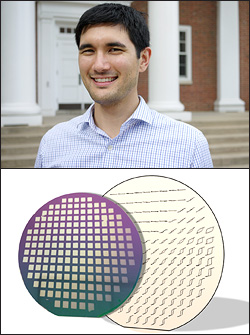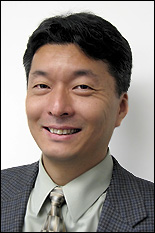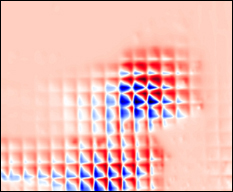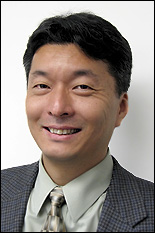News Story
Takeuchi, Multi-University Group Lead Materials Research
Department of Materials Science and Engineering professor Ichiro Takeuchi and his collaborators have been awarded millions of dollars in funding from the Department of Defense (DOD) and Department of Energy (DOE) to advance the discovery of new materials for use in energy, transportation, defense and industrial applications.
A key factor in these studies is Takeuchi's expertise in combinatorial materials science ("combi"), a highly specialized area of materials research that allows scientists to rapidly screen and analyze a large number of compositionally varying samples to determine if any have the characteristics the researchers desire, saving time and money in the process. The Takeuchi Group and its related laboratories, including the Keck Laboratory for Combinatorial Nanosynthesis and Multiscale Characterization, equipped with seven thin-film devices and multiple rapid characterization and screening tools to support its research, represent one of the largest combi efforts in the world.
The first project, titled "Broad-Based Search for New and Practical Superconductors," is being conducted in collaboration with PI Professor Richard Greene (physics) and is funded by a five-year DOD Multidisciplinary University Research Initiative (MURI) grant of up to $5 million. The project's goal is to discover new high-temperature superconductors that could be used in maglev transportation, energy generation and storage, and ultrasensitive sensors and measuring devices. A new high-vacuum combinatorial pulsed-laser deposition system was constructed specifically for the research.
"Currently, superconductors need to be cooled by cryogens such as liquid nitrogen or liquid helium in order for them to function," says Takeuchi. "That's inconvenient and can be expensive. Discovering a superconductor that can function at room temperature would be the ultimate achievement, but anything we can do to increase the temperature at which they function would be a step in the right direction."
The second project, titled "Beyond Rare Earth Magnets" and conducted in collaboration with the DOE's Ames Laboratory and PIs across multiple universities, will receive up to $10 million over five years to fund the development of new permanent (non-electro-) magnets that do not contain rare earth elements such as neodymium (Nd) or samarium (Sm).
Permanent magnets are capable of storing energy, converting mechanical to electrical energy, and directing and controlling ion beams. They are found in mechanical devices that are used everywhere in industrialized society, including generators, alternators, motors, speakers, and relays.
"All of the best permanent magnets contain rare earth elements," Takeuchi explains. "The problem is, as the name suggests, they're scarce and expensive. Most of the world's known deposits of rare earth metals are located in China. The DoE is concerned about the possibility of shortages. My colleagues and I have been asked to start the search for new, high-energy permanent magnets that are just as good or better than traditional rare earth products."
For More Information:
Visit Professor Takeuchi's homepage »
The Keck Laboratory for Combinatorial Nanosynthesis and Multiscale Characterization »
MSE Research Spotlight: "Combinatorial Synthesis: A New Method of Discovery" »
Published April 16, 2010













